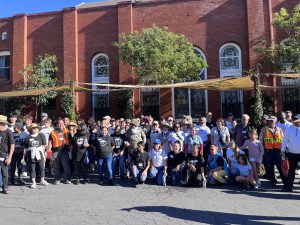Learn More
Census Response
Metadata
Variable Definitions:
Self-Response Rate: The percentage of mailable housing units that respond to the census online, by phone, or by mail
Source:
United States Census Bureau
Years Available:
2010, 2020
Why are these variables important to measure?
Every ten years, the federal government conducts a “census,” where it counts every person living in the United States. The Constitution mandates that all people – including children and adults, the employed and unemployed, immigrants, renters and homeowners – must be counted. The form asks ten simple questions around demographics such as race, age, marital status and household size. The census form can be completed online, by phone or by mail. Because the United States is a representative democracy (meaning that political representation is based on population), understanding the number of residents is essential to ensure that everyone gets a fair share of political representation and government resources. For this reason, the Census Bureau actively emphasizes participation and tracks response rate data within communities across the nation.
While the Census aims to count all residents of the United States, it has historically missed many people. Immigrants, young children, Black Americans, Asian Americans, Latinos, Native Americans, Pacific Islanders, low-income communities, people with disabilities, renters, and people experiencing homelessness are some of the groups who are most likely to go uncounted in the census. According to a recent study by the Population Reference Bureau, self-response rates for the 2020 Census were lower in locations with a very high risk of undercounting young children. A variety of factors make certain populations hard to count including language barriers, lack of internet access, frequent moving between residences, and distrust of government. In Los Angeles, the most important factors in the low response score were education levels, poverty, housing, and ethnicity. Los Angeles County is also the hardest-to-count county in the United States. Nearly 5.2 million residents – making up half of the county’s population – are considered hard to count. Los Angeles County is projected to see population growth of around half a million people in the next decade, and ensuring an accurate count of all current residents will be especially important to obtain the federal resources needed to keep up with population growth. More than $650 million in federal funding was lost in Los Angeles County due to an undercount in the 2010 census.
Written by Fernanda Martinez Montesinos
Related Data Stories

The Book Truck: Delivering Literacy in Southern California
Why Do Some People Read? For children in some communities, books and reading are omnipresent. Reading begins as amusement and entertainment and grows into a



